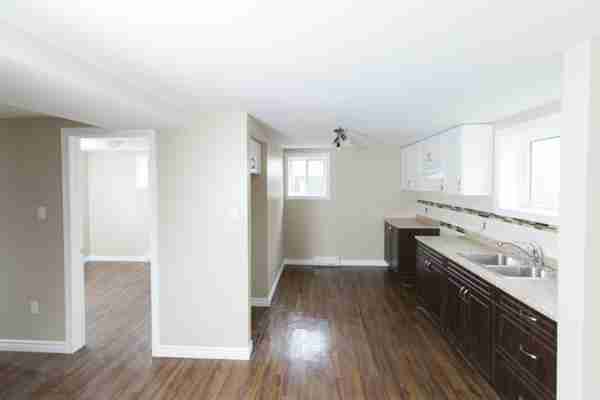June 27,2023
Garden apartment Definition & Meaning
by Jennifer Cameron inGarden Style
8 Landscape Design Styles & Ideas
The best landscape designs are the ones that have been carefully thought out with attention paid to the details. Before planning a landscape it is important to decide what style would best fit your home and lifestyle.
One of the most important things in landscape design is to work with what you have. For example, if you really want a formal English garden, yet your yard conditions don’t support this, it will never come out right. But, if you live in an arid climate, you should consider incorporating drought-resistant plants and xeriscaping elements into your landscape design.
When choosing a landscape or garden style, there are a few factors you should consider:
What kind of conditions exist in your yard? Is the area very sunny or mostly shady?
What kind of activities do you plan to use your yard for?
Who will be using the yard? Do you have children or pets you should consider?
Do you need a low-maintenance landscape or do you enjoy spending a lot of time caring for your yard?
Which landscape style would best complement your home?
Which landscape style best reflects your lifestyle?
There are numerous traditional landscaping and garden styles which you can model your own after. Or you can be creative and incorporate elements from different styles to create a look of your own design.
1. English Garden Style.
The English Garden Style utilizes many shrubs and perennials in a design that complements the architectural style of your home. Other decorative elements might include an arbor or bird bath.
2. Oriental Landscape.
The Oriental Style uses water, rocks and evergreens with a variety of plants to create distinctive perspectives. You might also consider adding a traditional Japanese Zen garden.
3. Woodland Landscape.
Reflecting the natural way that fauna grows in a wooded area, the Woodland Style has a less manicured appearance than many of the other garden styles. This would be a good choice if you do not wish to spend a lot of time on maintenance.
4. Formal Landscape.
The Formal Style follows symmetrical patterns, straight lines and precise geometric shapes with orderly, well-pruned plants. You will often find topiary design in these landscapes. This landscaping style requires a lot of maintenance.
Ready to start your landscape design ? Find Pros
5. Informal Landscape.
The Informal Style uses plant beds with curved edges. Plants are arranged in seemingly random patterns. This would be a good choice if you have children that will be playing in the area.
6. Butterfly Gardens.
Dozens of butterfly or bird species common to your area make a welcome addition to many gardens. Certain species of plants provide a food source and are useful for attracting these flying friends. Create areas that are open yet protected from the wind.
7. Xeriscape Gardens.
As much as 50 percent of household water is used for the yard or garden. This landscape specialty includes lots of low-water plants and flowers, as well as design ideas to reduce water evaporation.
8. Organic Gardens.
As more people learn about the harmful effects of many chemicals, growing plants organically has become more popular. That means rather than chemical fertilizers or sprays, practicing natural methods of pest control and fertilization.
Remember, you will spend a lot more time in your yard if you have a landscape design that you are happy with. And, if you have a yard you can enjoy on a regular basis, it’s like gaining a room in your home.
What Are Garden Apartments?
Short urban buildings with green space and amenities are perfect for some. Should you rent a garden apartment?

Communities come in many different shapes and sizes. In any large city, you’re bound to see apartment buildings ranging from four or fewer units to towering multi-use high-rises. Garden-style apartment complexes are meant to bridge the gap between these two extremes. Renters should know what to expect when determining the building they’d like to live in. Garden apartments can be unique and inviting. So, what is a garden apartment?
What is a garden apartment?
Garden apartments won’t necessarily have direct access to gardens or green spaces. However, Millionacres found that the term “garden apartment” can refer to any multifamily building with three or fewer stories and is surrounded by relatively green areas such as lawns, forests, community gardens, or parks.
This definition is used fairly loosely and may refer to a lower-level unit within a larger structure. Garden-style apartment complexes occupy rural, suburban, and urban parts of the city alike and often liven up an otherwise concrete jungle. Garden units themselves offer some outdoor living features. Ground floor apartments typically have large patios fit for those looking to do some small-scale gardening.
All in all, garden-style apartments are low-rise apartment buildings with natural or man-made green spaces available for use by the public or residents. These complexes are generally surrounded by low-rise buildings that sprawl along the outskirts of the property. Most garden apartment buildings offer amenities like pools, playgrounds, community gardens, large outdoor spaces, dog parks, and clubhouses. However, none of these amenities are a requirement for a building to be considered a garden apartment.
The definition of a garden apartment is somewhat ambiguous. These are a few of the things most people consider to be integral to garden apartments:
Easy access: Garden apartments are known for having onsite parking close to your respective apartment. Additionally, the units of a garden apartment building shouldn’t require more than two flights of stairs to reach at most.
Garden apartments are known for having onsite parking close to your respective apartment. Additionally, the units of a garden apartment building shouldn’t require more than two flights of stairs to reach at most. Spread out: Garden-style apartments typically offer more space than taller or even mid-tier apartment buildings, resulting in a much quieter living space and a greater sense of privacy.
Garden-style apartments typically offer more space than taller or even mid-tier apartment buildings, resulting in a much quieter living space and a greater sense of privacy. Green spaces: Green space is essentially required for an apartment to be considered garden-style, although there are some exceptions to this rule. Most garden apartments are characterized by large areas of greenery, flowers, or woods. These areas are maintained and landscaped to be visually appealing and can even occupy interior courtyards.
Green space is essentially required for an apartment to be considered garden-style, although there are some exceptions to this rule. Most garden apartments are characterized by large areas of greenery, flowers, or woods. These areas are maintained and landscaped to be visually appealing and can even occupy interior courtyards. Amenities: Garden apartments will sometimes use their land for amenities rather than green space. Popular amenities such as clubhouses, pools, and lounging areas can attract renters.
Garden apartments will sometimes use their land for amenities rather than green space. Popular amenities such as clubhouses, pools, and lounging areas can attract renters. Outdoor units: Garden apartments generally have open walkways where you can walk directly to your apartment without entering through an internal lobby or hallway.
Although this definition isn’t seen all that often, the term garden apartment can be used to refer to a ground floor or basement unit with ample access to a garden. For example, a basement unit with a private patio or a first-floor apartment with a garden.
The Pros of Renting a Garden Apartment
There are several advantages to renting and living in a garden-style apartment. From accessibility to better sleep, a garden apartment can be just the right thing for certain individuals:
They’re Better for Late-Shift Workers
These units are great for those that work late or night shifts. Garden apartments are dark, quiet, and sheltered from the sun during the day. Working night shifts mean coming and going at odd hours of the day and night. Because these apartments are fairly spread out and usually on the first floor or basement levels, you can silently slip in and out without disturbing your neighbors.
They’re Accessible
Garden-style units are usually either at or near street level. This means you won’t have to contend with multiple flights of stairs or elevators. Most garden apartments have just one or two flights of stairs, if any at all, making them easy to move into.
Pet Owners Love Them
If you own a pet that needs to go outside multiple times a day, garden apartments are the perfect fit. Their low level means fewer flights up and downstairs with your four-legged friend. Garden apartment complexes are known for their plethora of green spaces, great for long walks with your pet, and will sometimes provide fully equipped dog parks to residents.
They’re Efficient
Garden apartments keep the heat and save you money in the process. The lower ceilings and carpeting helps keep heating costs low during the winter while allowing heat to rise away from the unit in the summer. According to ApartmentTherapy, this energy-efficient ratio will save you money on your electricity bill.
The Cons of Renting a Garden Apartment
Of course, garden apartments have disadvantages, as well. They range from financial concerns to reduced attractiveness:
Less Natural Light
For the same reason that these apartments are perfect for night shift workers, they are poor options for those living in cities with a shortage of daylight. If you prefer bright shiny mornings or tending to indoor plants, garden apartments probably aren’t the right fit.
Higher Humidity
If you live in an area with high humidity, your garden unit will soak that moisture up, and you’ll be stuck in it. An indoor space with a high moisture content can also attract mold and pests into the home.
There are pros and cons to every building style, but it’s always a personal decision that depends on many factors. When you’re ready to begin looking for an apartment to rent, consider these things throughout your journey; price, location, rental agreement, and renter reviews.
Garden apartment Definition & Meaning
Recent Examples on the Web

In 1975, Norman and Marna Cary lived on the bottom floor of a Hyattsville garden apartment that backed onto woods near the Northwest Branch of the Anacostia River. — Washington Post, 28 Nov. 2021
Investors FCP and VaultCap Partners have acquired the Corey Place Apartments, a 275-unit garden apartment community at 602 West Pioneer Parkway in Grand Prairie. — Steve Brown, Dallas News, 6 Aug. 2021
Mother walked softly into the garden apartment through the kitchen door. — Vivian D. Nixon, Harper's BAZAAR, 28 June 2021
Authorities say Williams was identified as the ex-boyfriend of a 30-year-old woman who was shot in her garden apartment in the 5200 block of West Congress Parkway around 11:45 Tuesday. — Katherine Rosenberg-douglas, 3 June 2021
The fire affected 28 units in a three-story garden apartment building in the 13100 block of Larchdale Road in the Laurel area, the fire department said. — Washington Post, 23 Dec. 2020
However much Arizona is associated with sprawl, the Phoenix region is actually a builder of everything — towering condos, garden apartment complexes, golf course villas. — Conor Dougherty, New York Times, 31 Oct. 2020
The rentals would have between 551 square feet for the smallest garden apartment and 1,319 square feet for a two-bedroom townhouse. — 18 June 2020
Of those, almost two-thirds live not in high-rises or garden apartments, but single family homes, or buildings with four our fewer units. — Shawn Tully, Fortune, 14 May 2020
See More
